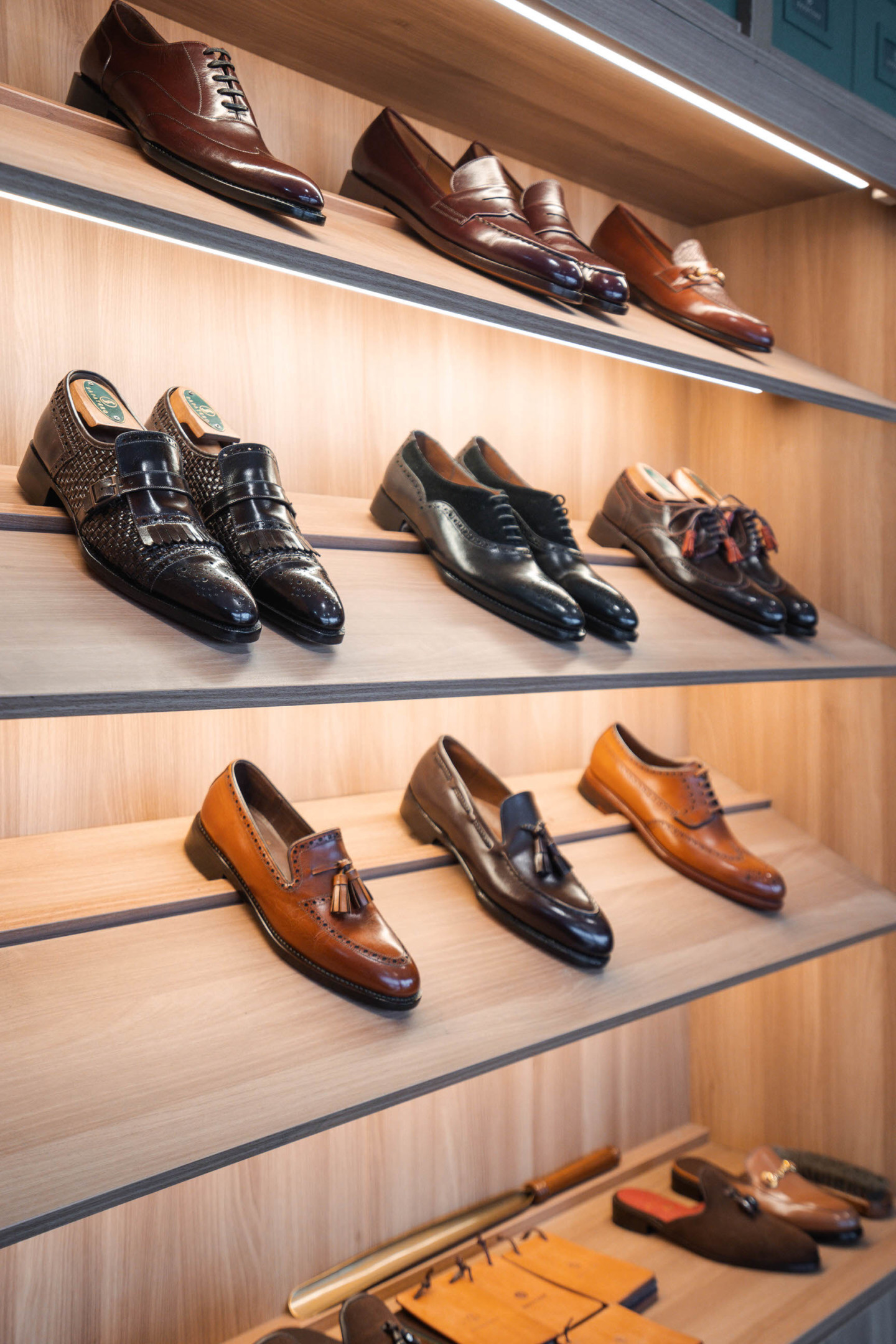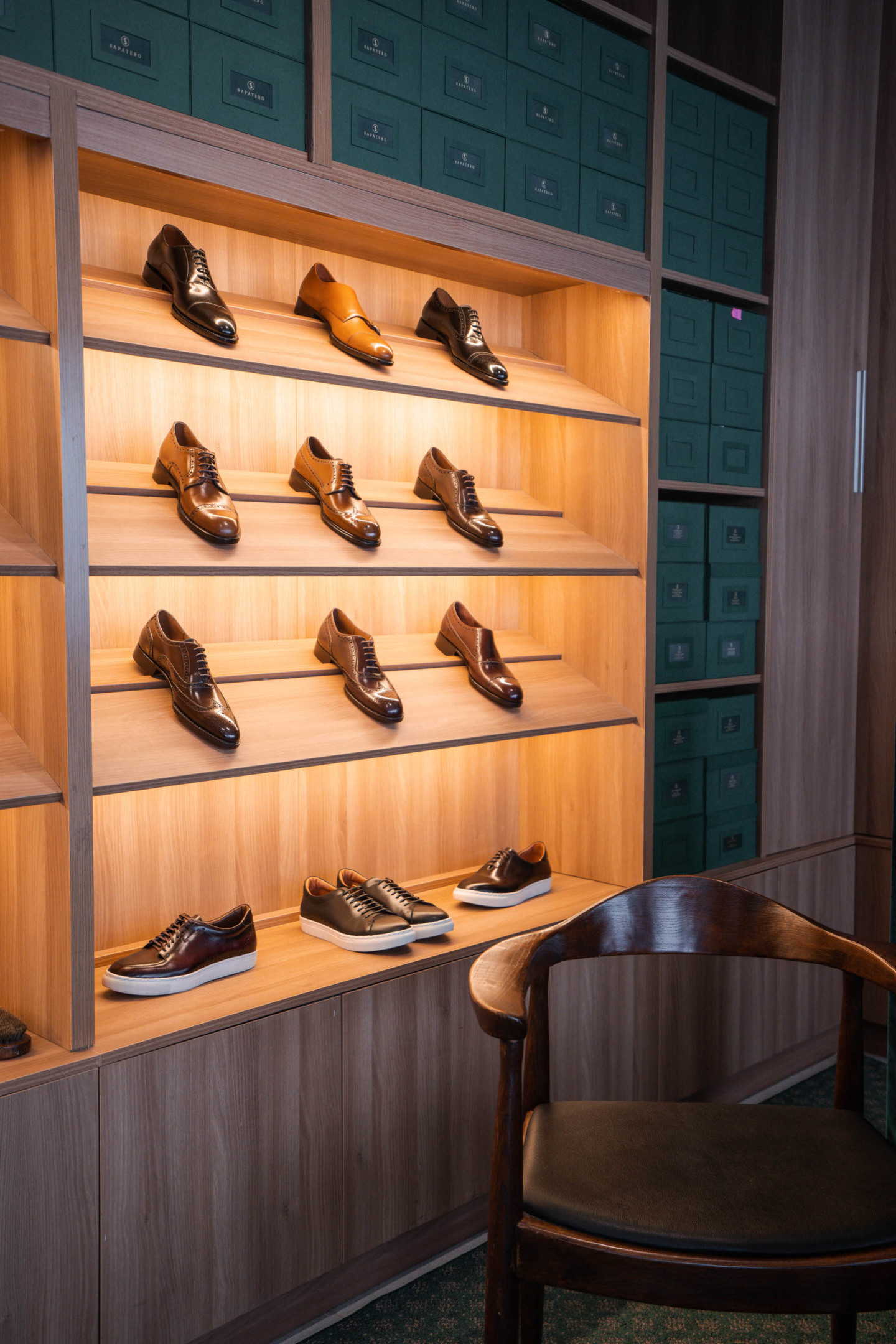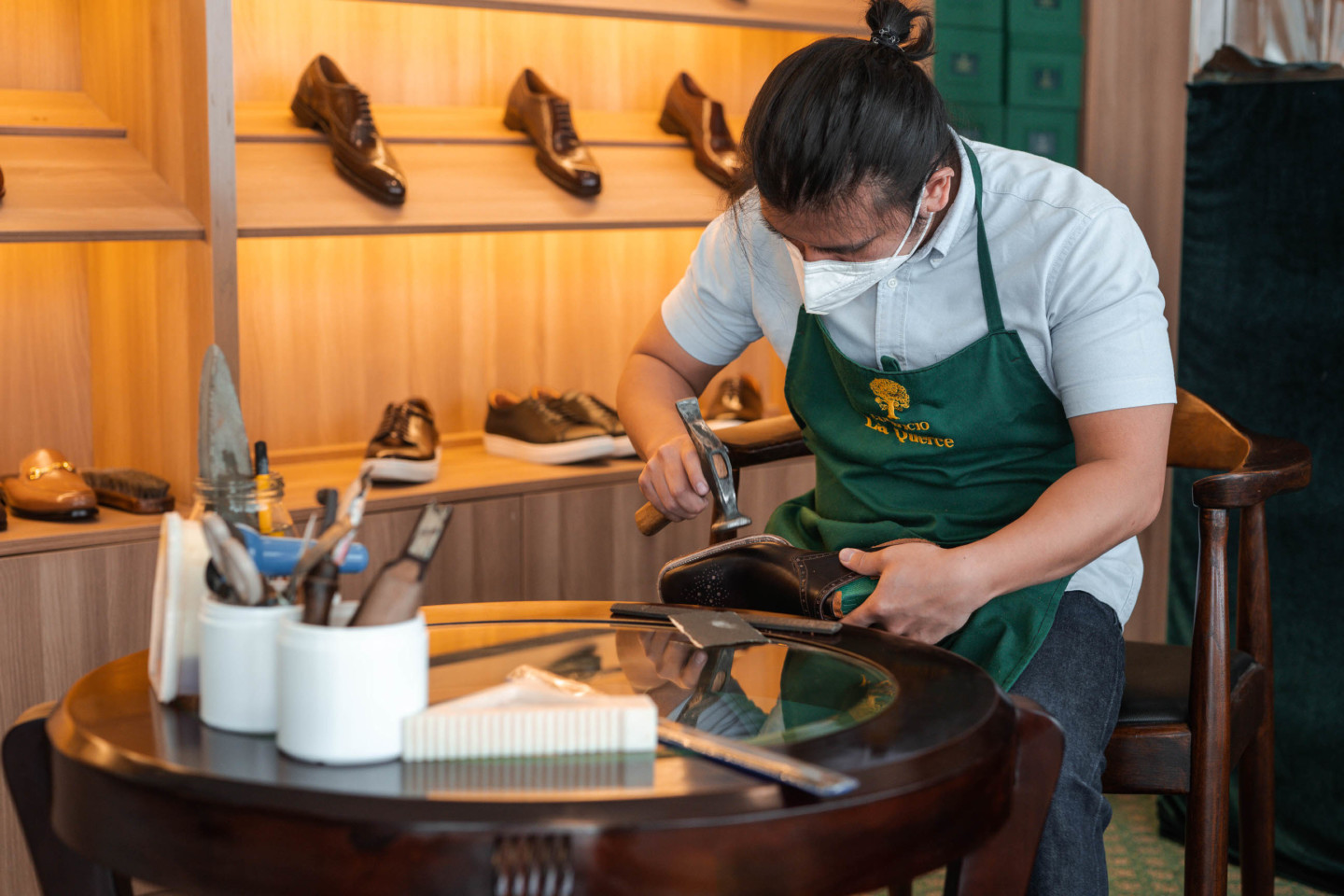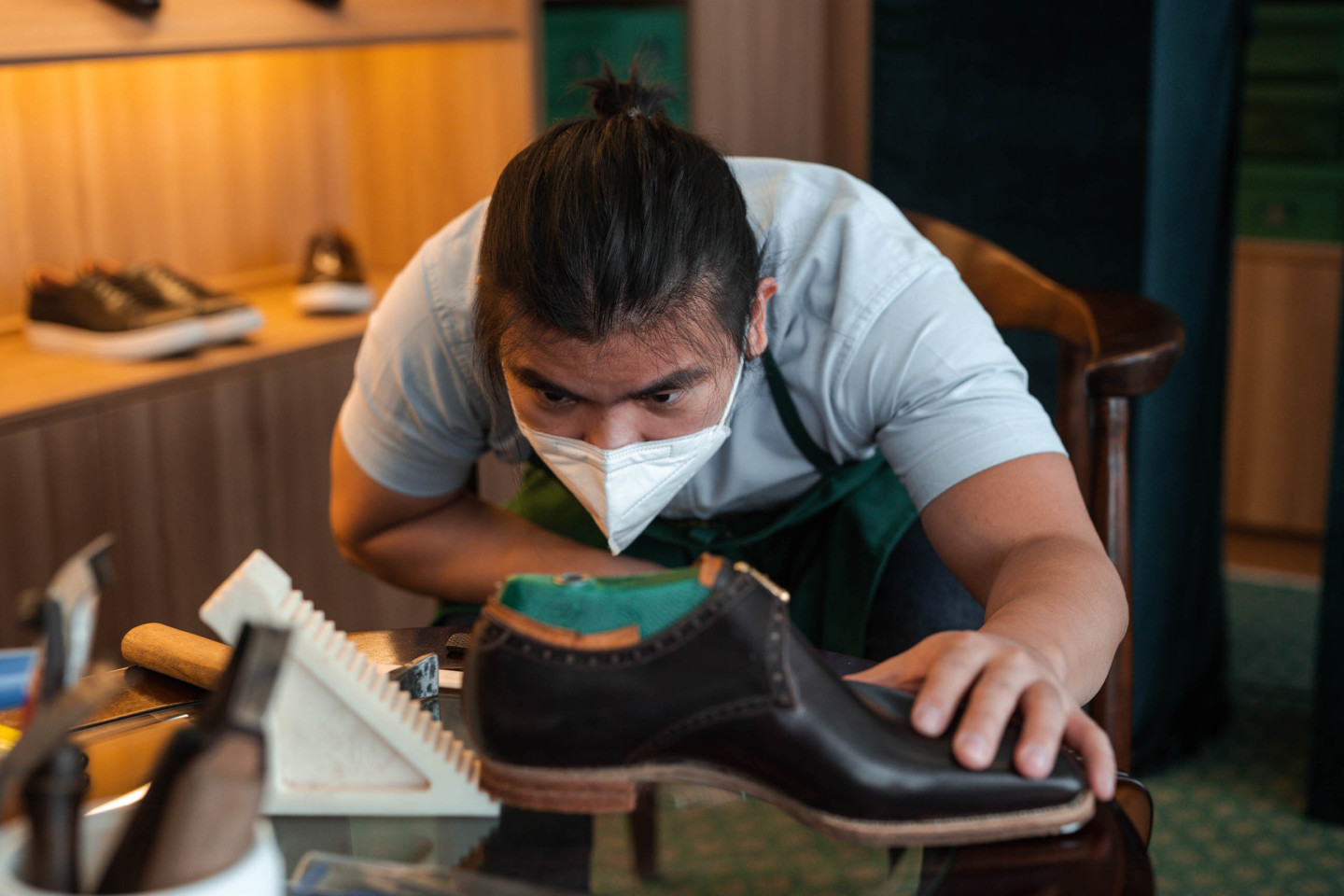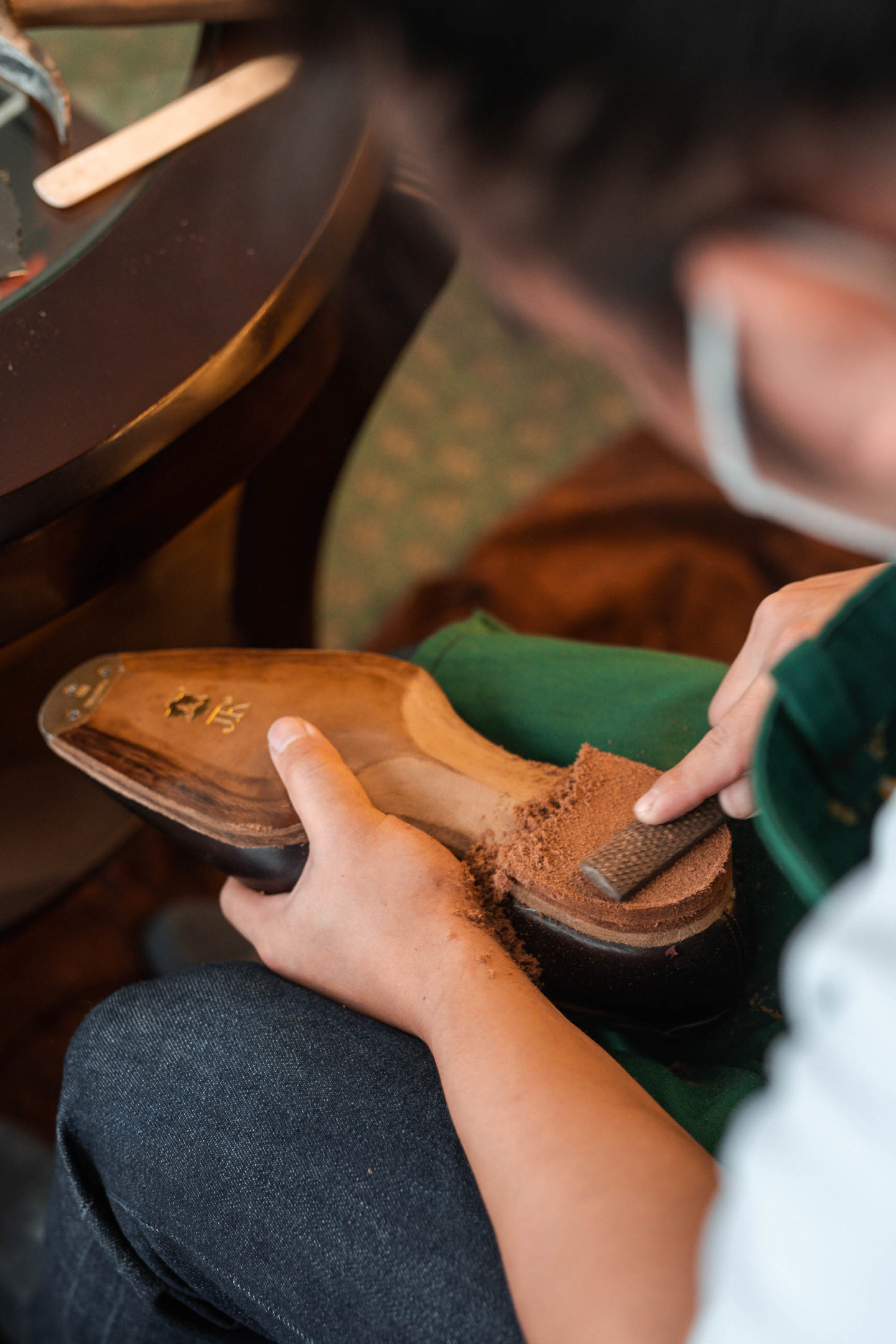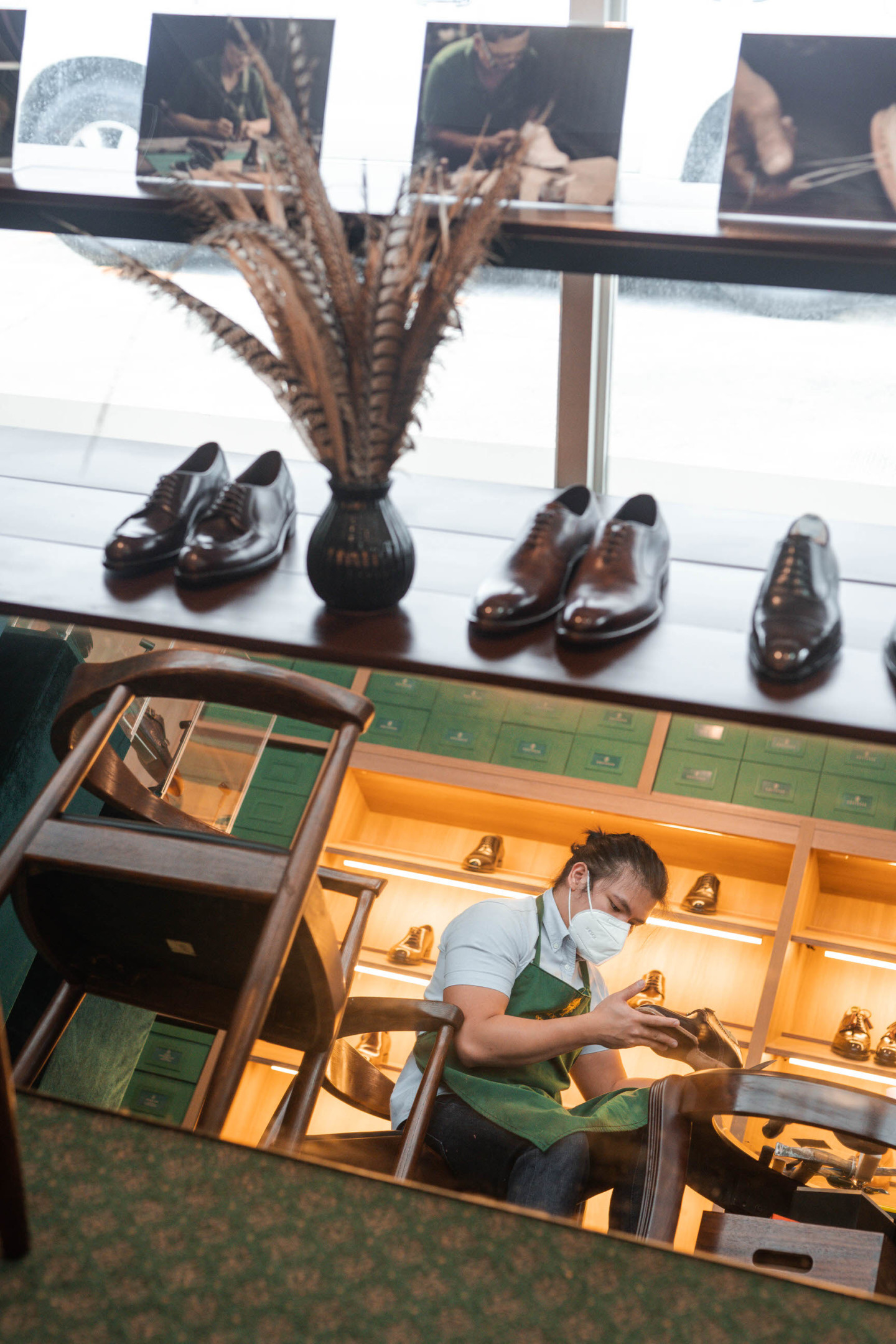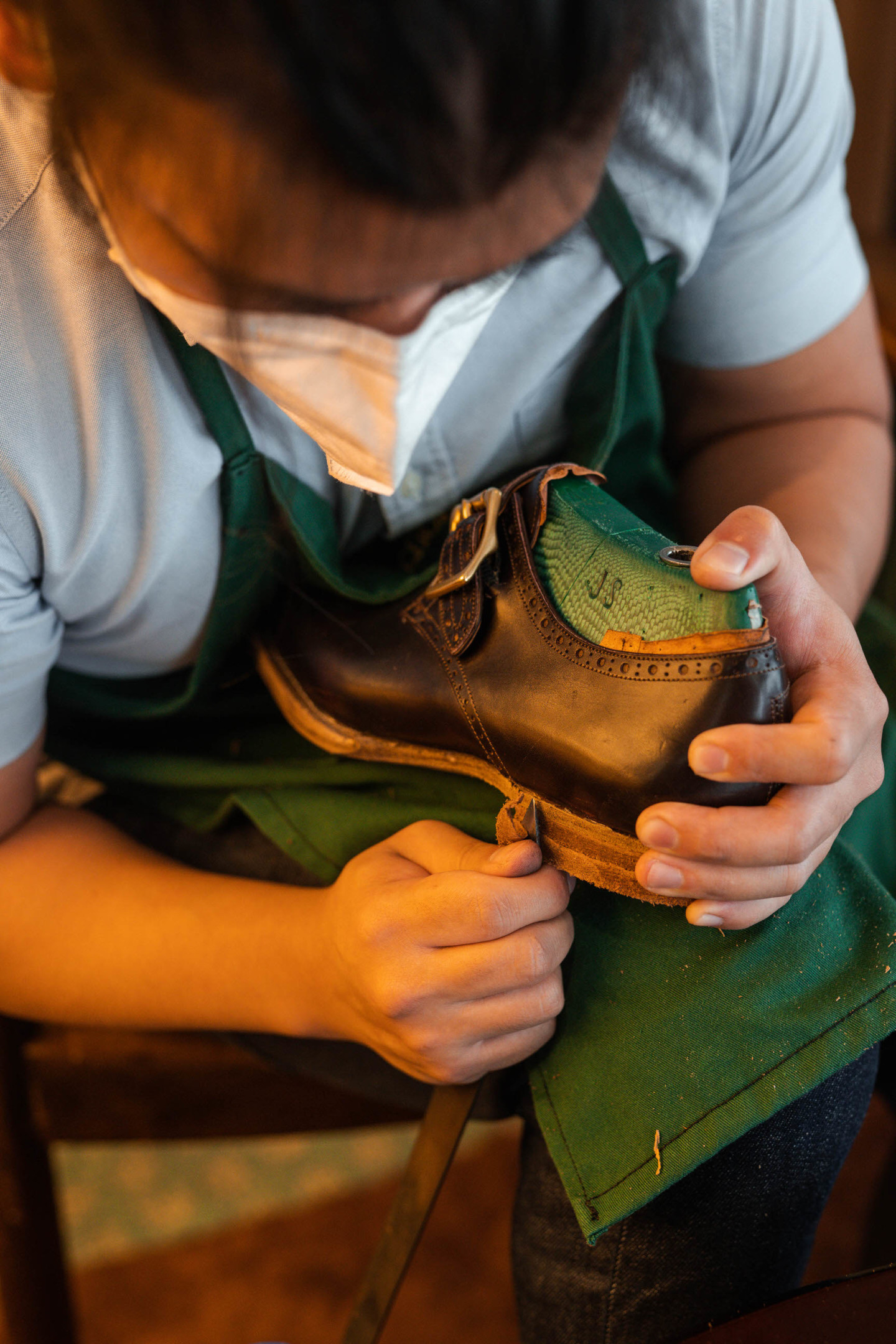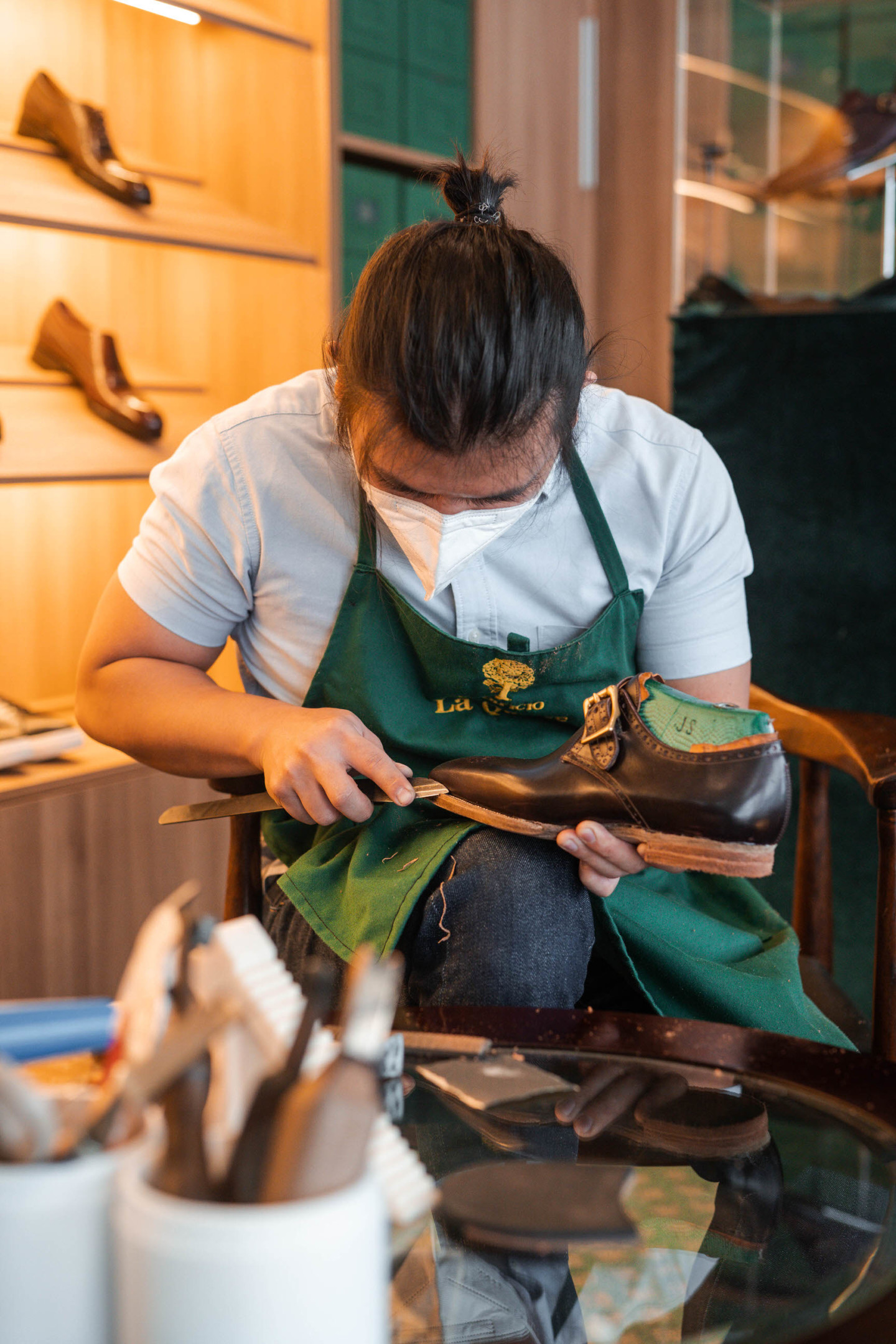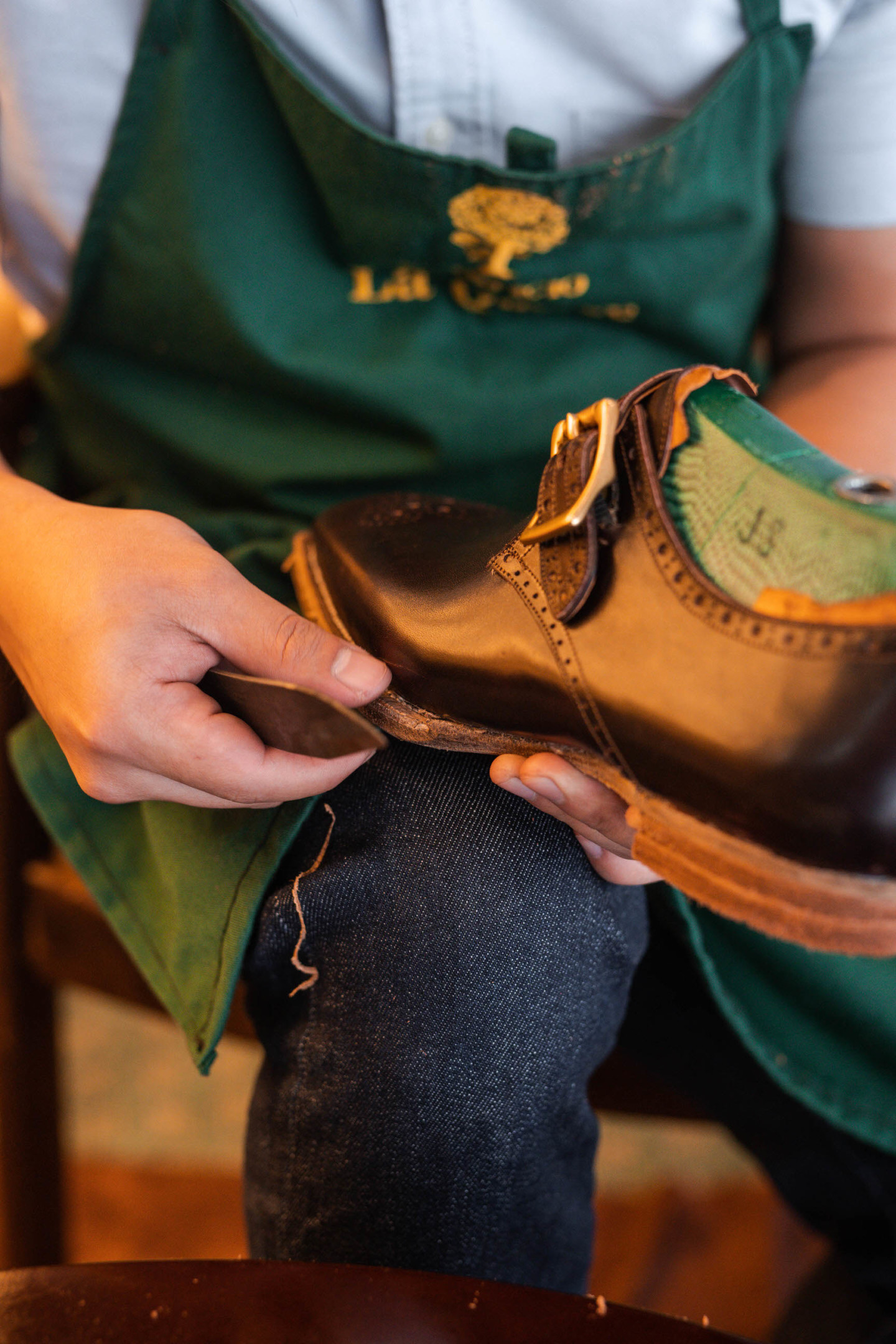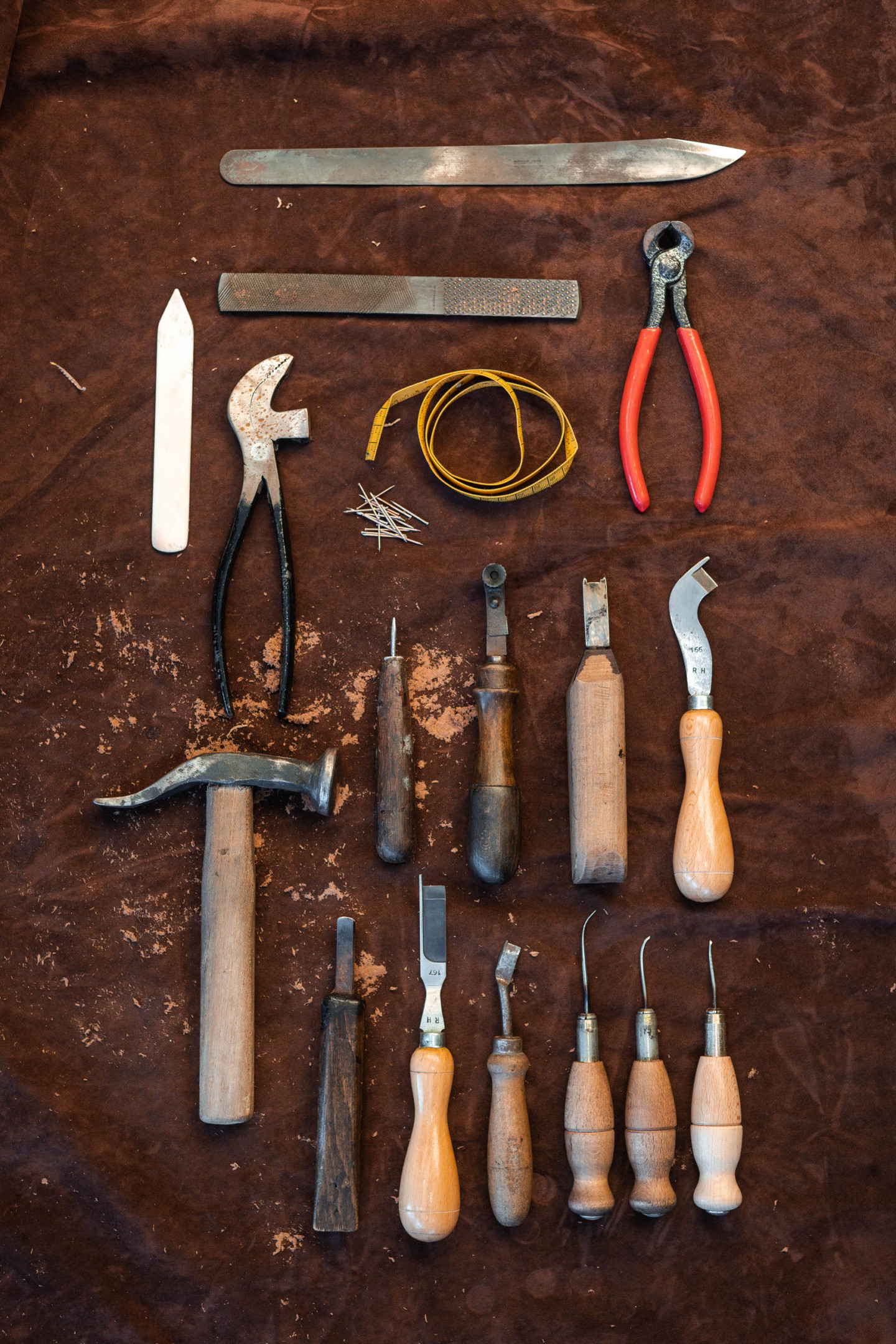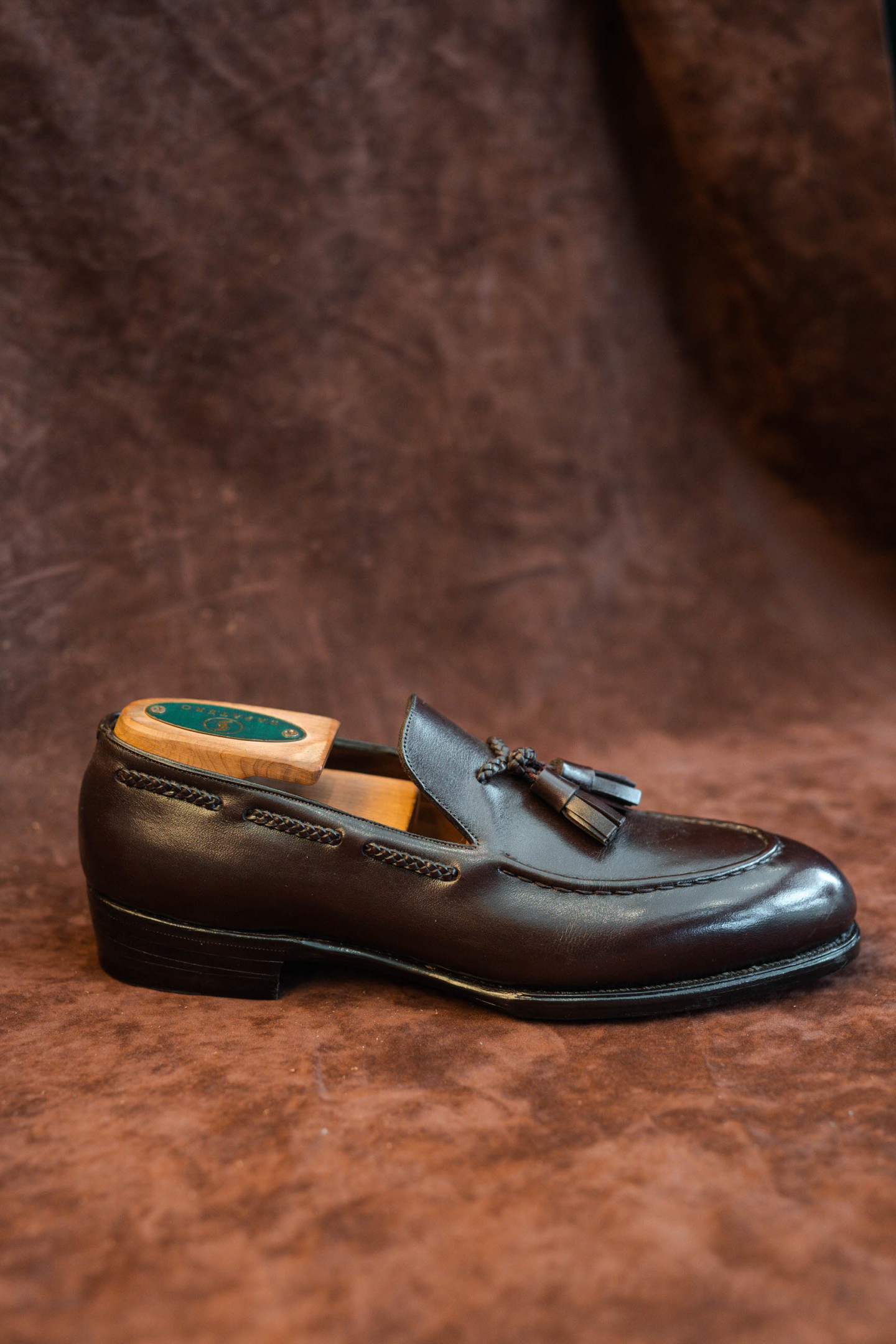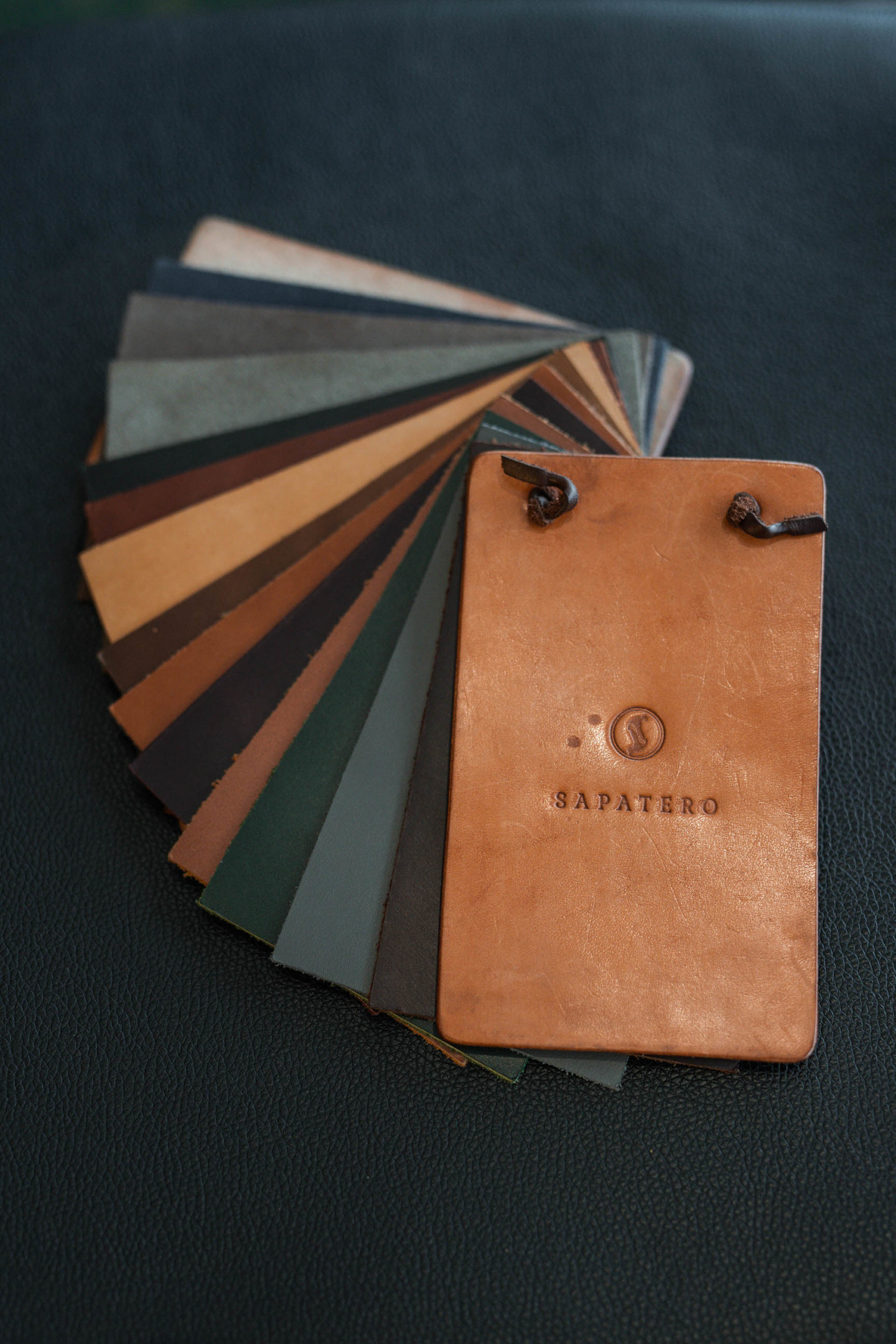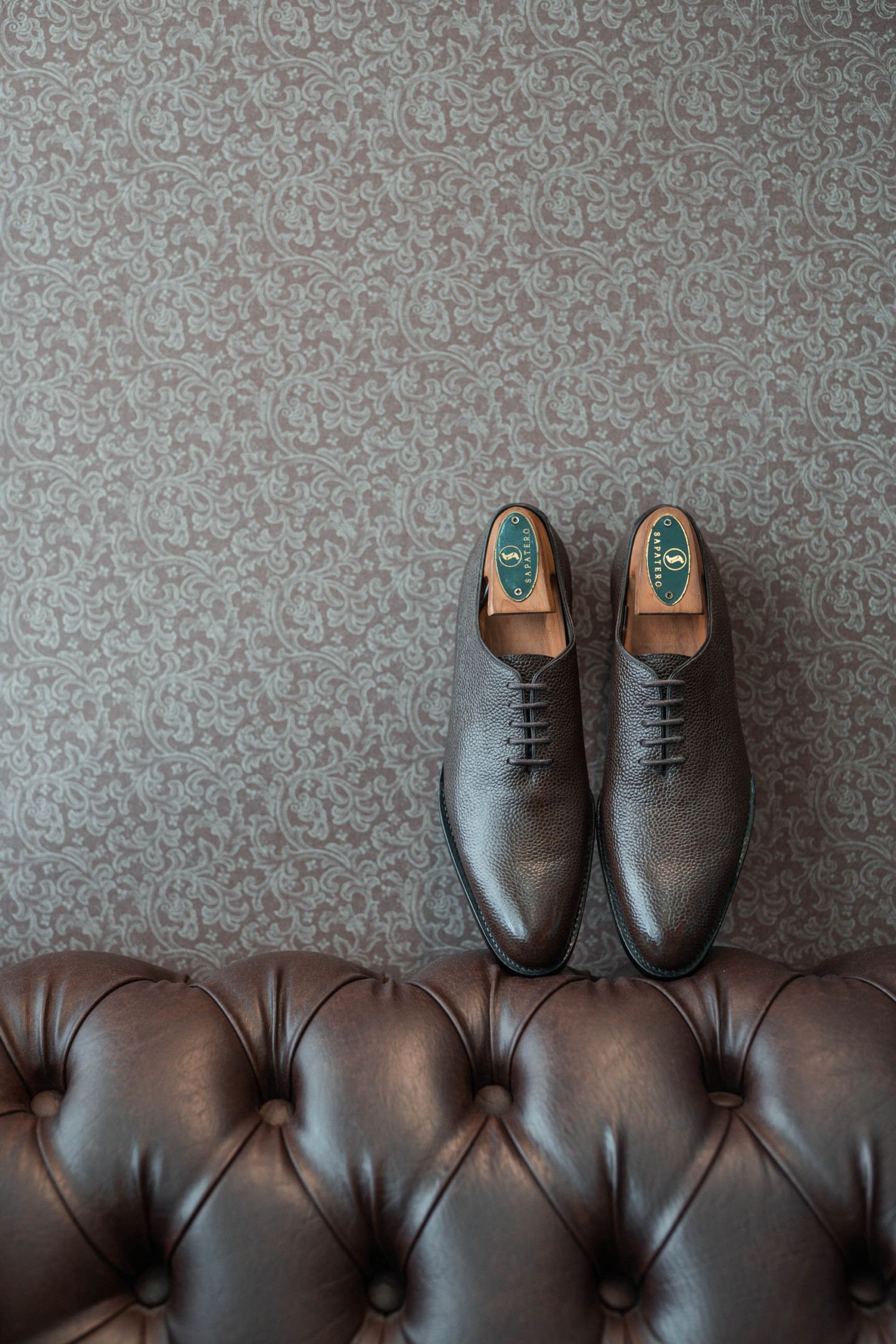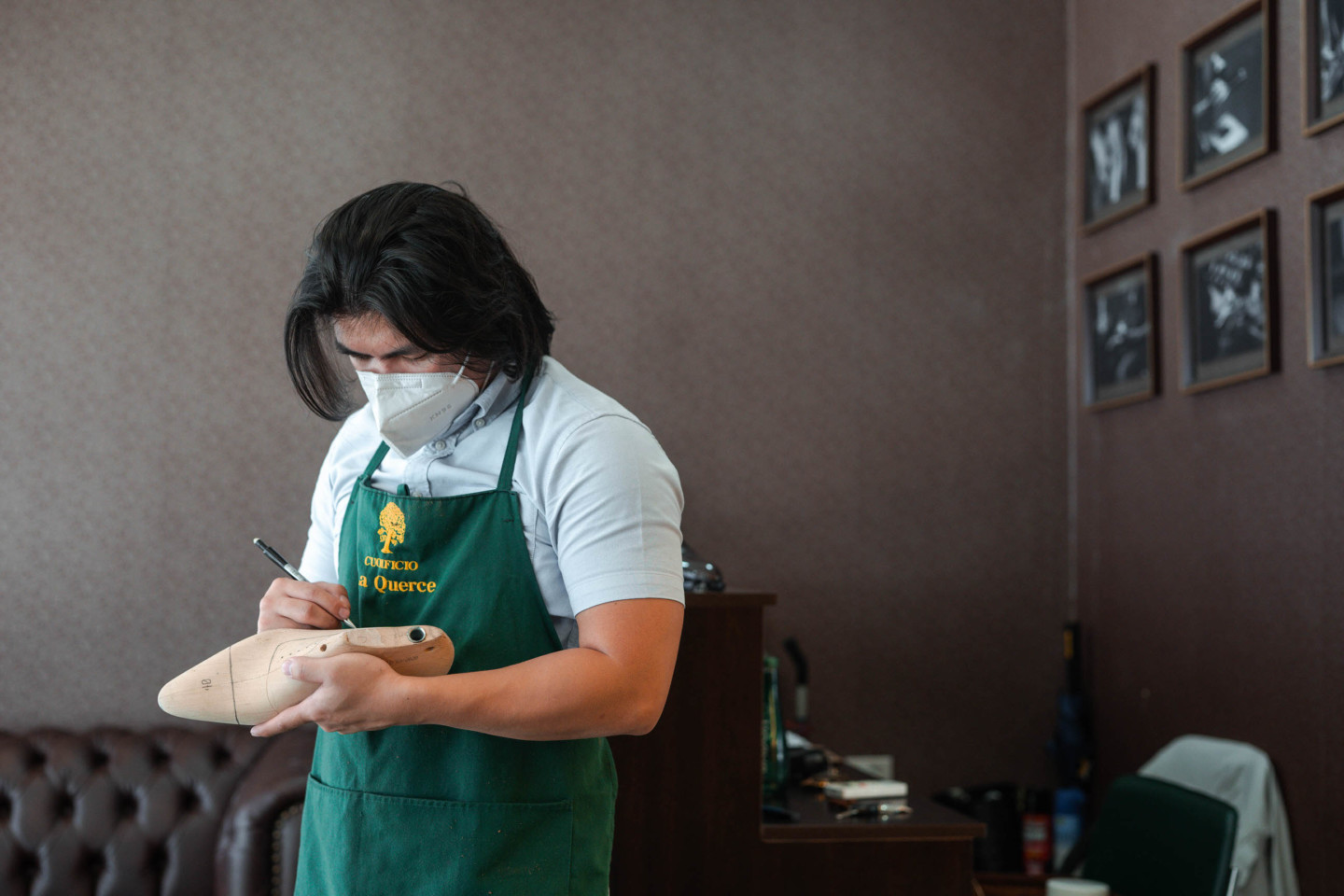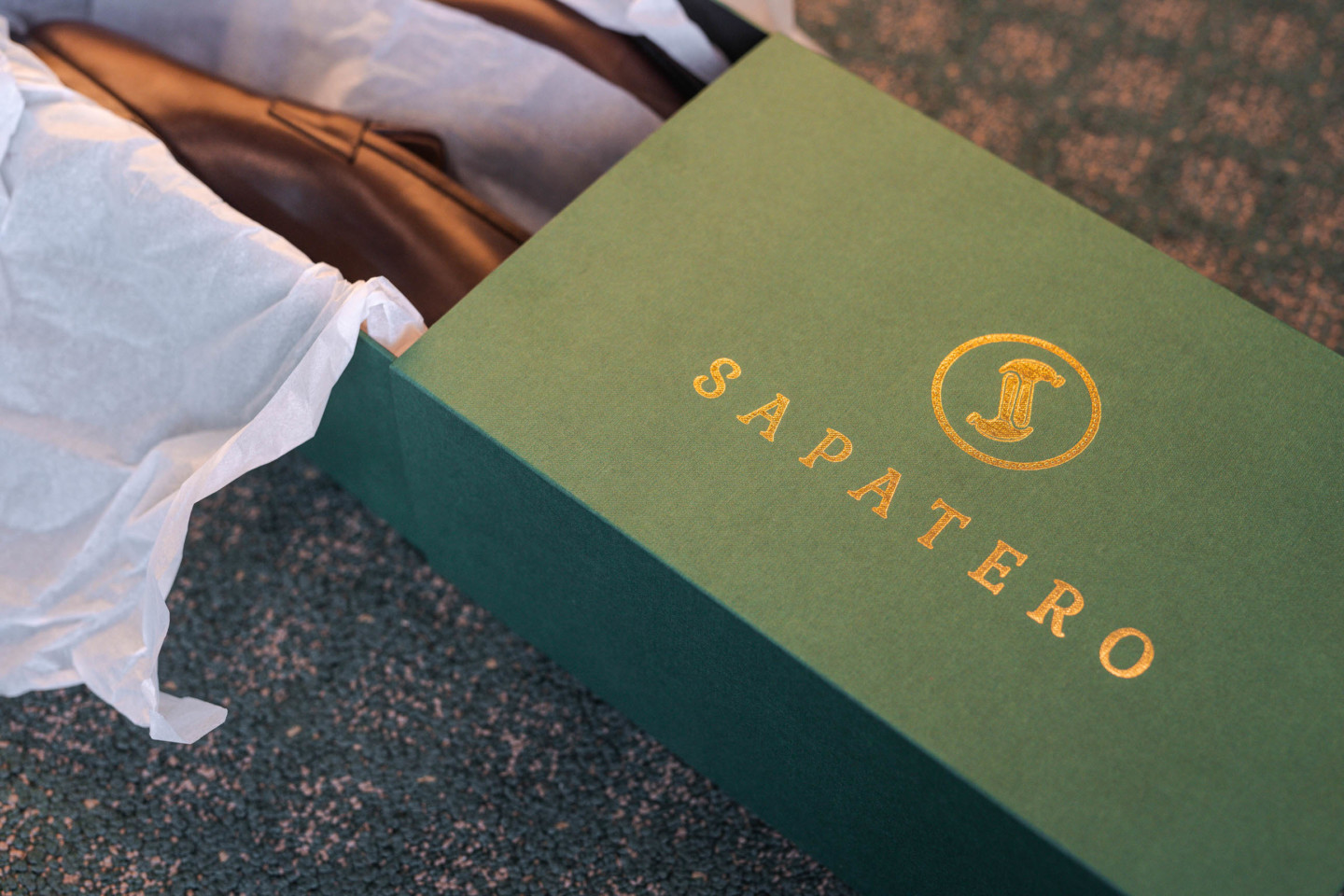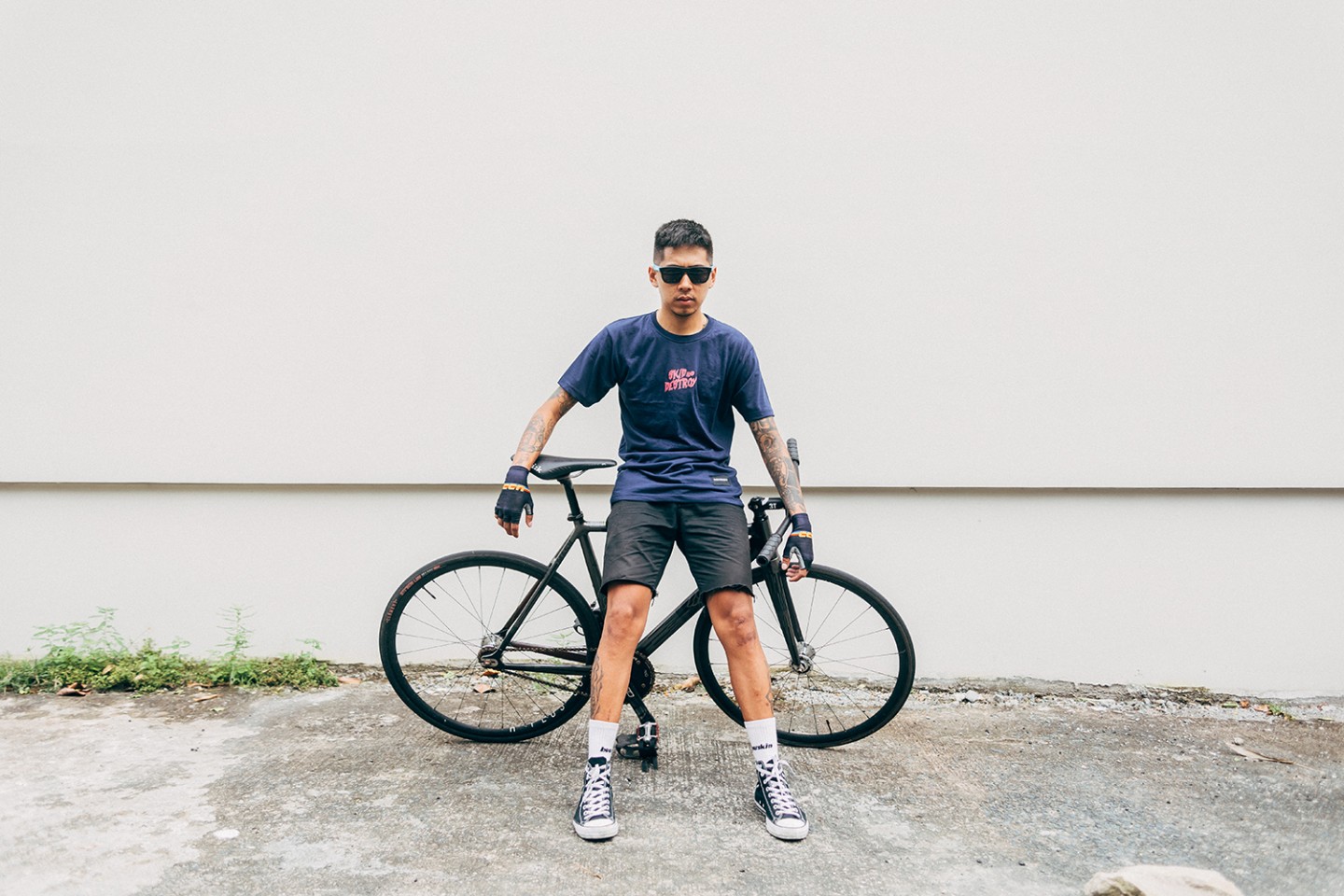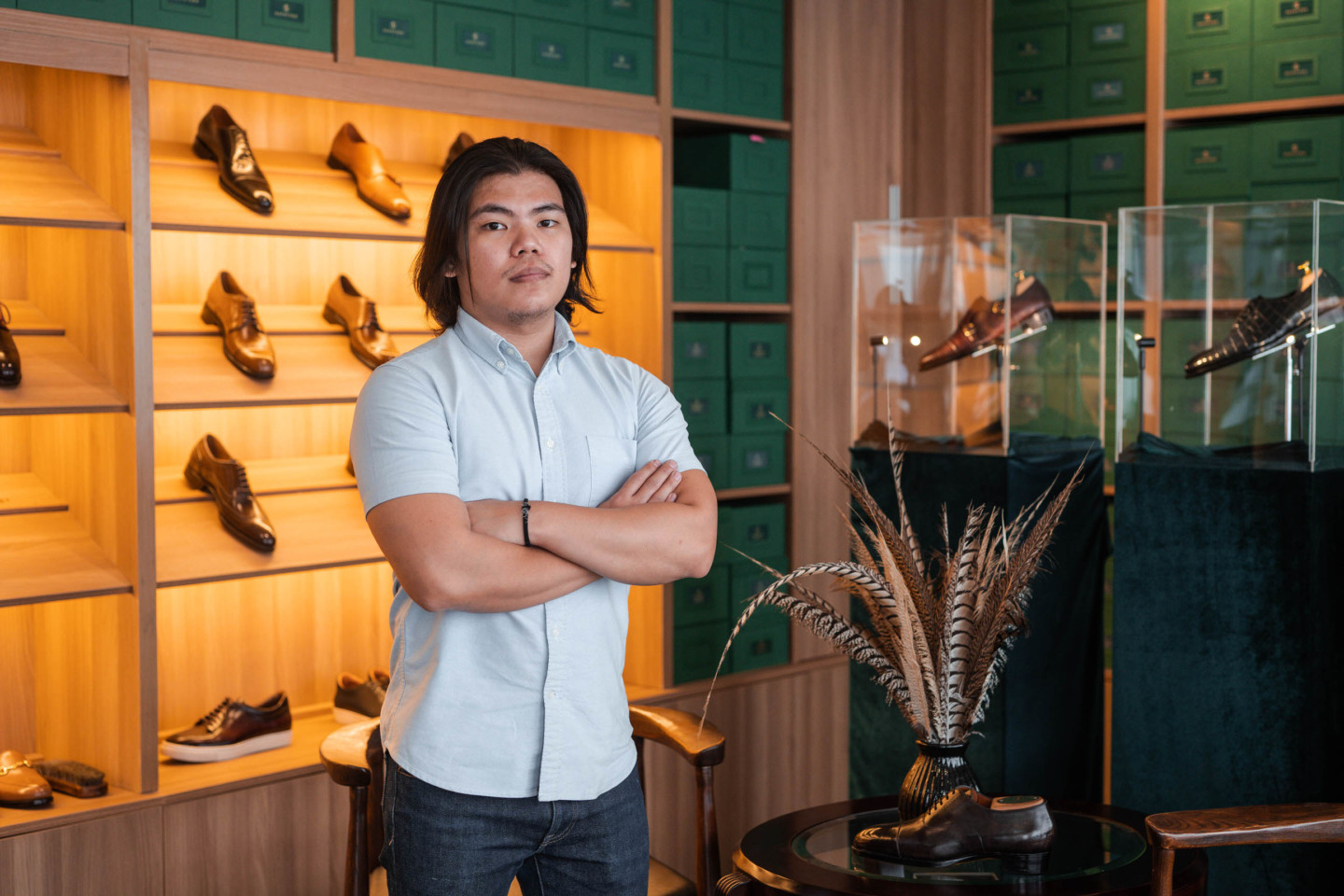
One can say that the appreciation for the Philippine shoemaking industry is miles away from countries such as Italy and France where the craft is highly esteemed. For one, the Philippine general public’s regard for shoes is functional at best. Only very few Filipinos appreciate the value and are willing to pay premium for hand-crafted shoes. This leaves a gaping challenge for the local shoemaking industry. It’s not the lack of talented craftsmen that hinders the industry from completely thriving. It’s the lack of awareness and reverence for the craft.
How then does the industry pivot to being an exciting arena of opportunities and possibilities? This was Jerard Jader’s motivation. Fueled by his mission to make Sapatero the best in the country and one of the bests in the world, he embarked on a journey to leave his comfort zone, learn from the master shoemakers of Florence, and return home with an enriched set of knowledge, skills, and perspective—geared towards driving the local shoemaking industry.
Jerard’s entrance to the world of shoemaking was quite sudden and serendipitous. He was a fresh graduate from college when he stumbled upon the opportunity to work as sales personnel at Sapatero. In 2013, he became Sapatero’s first hire. Six years later, Jerard became one of the partners of the brand.
In the country, Sapatero can be regarded as the pioneer in handcrafted shoes by taking the leap at the time when no one dared. They invested in the craft even before larger communities of handcrafted shoes started in the Philippines. All the while being fairly new to the industry themselves.
Contrary to popular belief, the leaders of Sapatero did not come from a lineage of shoemakers. While some may have perceived this as a disadvantage, Jerard saw this as an exciting challenge—an opportunity. The fact that they did not come from families of shoemakers is precisely the reason why they were free to explore how they wanted to build their brand. They were not bound by preconceptions, assumptions nor strict traditions of how to run a shoe business. While Sapatero caters to the industrialized Filipino, it takes pride in being the only known shoemaking house in the Philippines to still practice the traditional method of hand welting.
After years of creating well-crafted pieces and building their brand, Sapatero opened its first-ever shop in Ortigas in September of 2019. It was not long after this milestone that he got an opportunity to share one of Sapatero’s masterpieces to Justin Fitzpatrick, creator of The Shoe Snob Blog who has been an inspiration not only to Jerard but the Sapatero team as a whole.
“It was essentially a dream come true,” Jerard described how it felt to be acknowledged by one of the most influential personality in the field. On a high with how Sapatero has been gaining supporters, the founders of Sapatero decided to take their passion for shoemaking to the next level. They took a leap of faith by sending Jerard to Florence, Italy—home of the masters of shoemaking. He entered a new and exciting season which can count as one of his professional life’s major turning points. He entered the school of Stefano Bemer, one of the most ambitious and now prestigious names in the world of shoemaking.
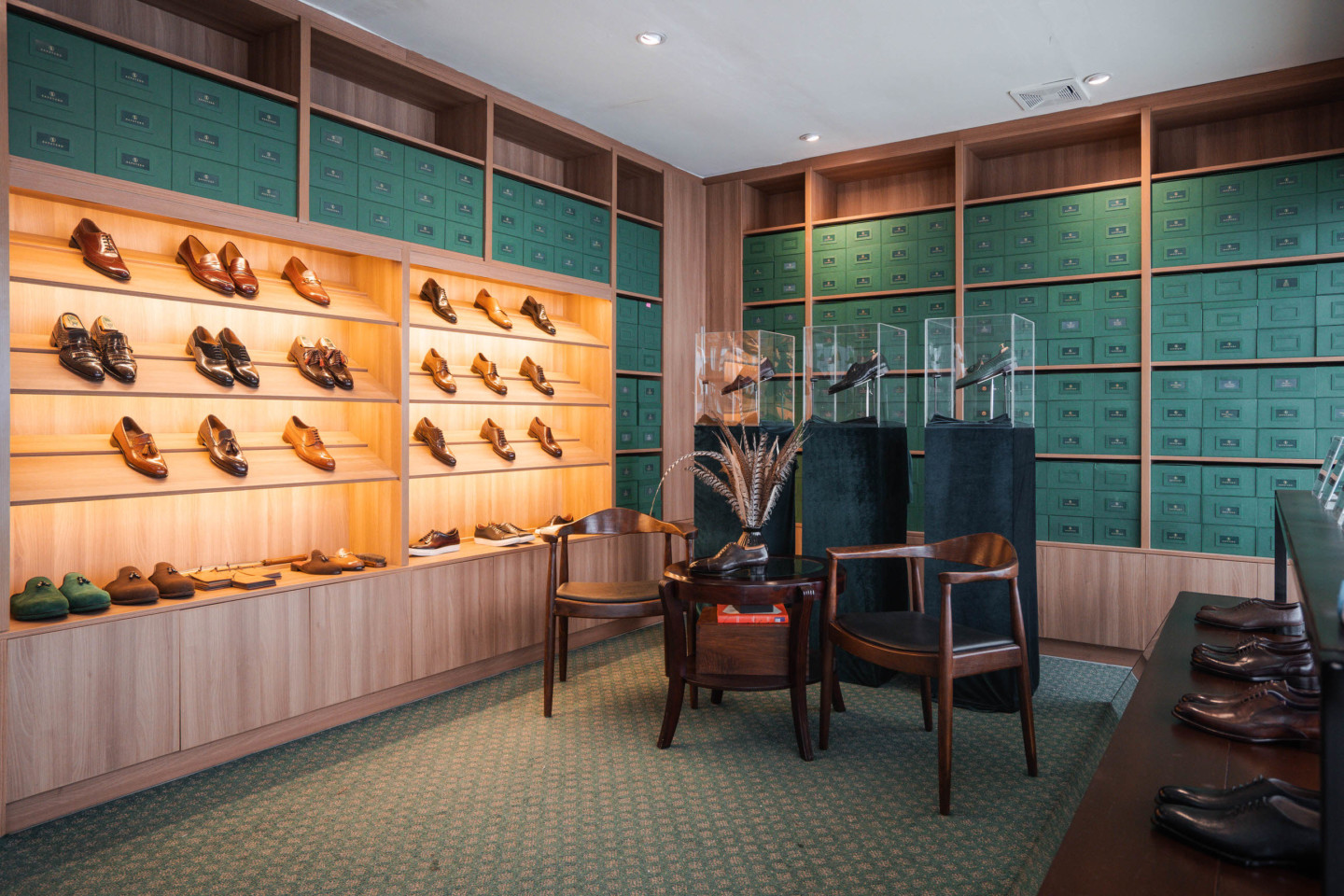
Images — Zaldine Alvaro
He spent around three months as an apprentice in the said school where he immediately recognized the salient difference of shoemaking between back home and in Italy. “In Italy, as expected, they have a very high regard for hand crafted shoes,” he shared. “People there are willing to pay premium for the art, the craft, for the craftsmen,” he further added. Contrastingly and perhaps understandably so, the shoemaking industry in the Philippines is not as revered. Majority of Filipinos have a very functional relationship with the industry.
Jerard tried to express why the two countries’ shoemaking industry are quite incomparable, “Shoemaking in Italy has been engrained in their culture. They have built an entire economy around it—from production of raw materials, to tools, to shops. Compared to our local setup, shoemaking is “just” shoemaking. We go to Marikina hoping to find good quality shoes for lower prices.”
While the Philippines has its own process of shoemaking, from his experience, the process can still be improved. These improvements encompass everything: from sourcing materials down to the nitty gritty of hand-crafting. The materials used locally make it harder for shoemakers to create high-quality pieces. In fact, insoles here are thinner and more fibrous, making this important material too malleable to retain a shape. In Italy, insoles are used not just for the shoes’ foot bed, it is also used as the foundation of the last. The main reason they can make their insoles an extension of their last is due to its quality—their insoles are thick, and can retain a shape better.
The shoemaker in Jerard wanted more because he knows that shoemaking in the country can be so much more, “The Philippines might not have the same theoretical knowledge about shoemaking, but the hand skill to make shoes, the practical knowledge—it’s unquestionable,” he put into words his admiration and aspiration for local shoemakers, especially the ones he works with daily at Sapatero. He dreams to fill these gaps.
Furthermore, as he immersed himself in the land of shoemaking, he realized how important time and patience are in creating hand crafted masterpieces, “Shoemaking can be a straightforward process, but it takes time. The more time we (shoemakers) take, the better the output. Spending more time produces shoes of impeccable quality.” Jerard also shared how he values mentorship, not only from his teachers in Florence, but also from his craftsmen in Sapatero, “If your ‘mentors’ do not point things out, you will keep on making the same mistakes and eventually build foundations that are detrimental to the shoes and to the business. As craftsmen, we have to welcome criticisms and treat mistakes as opportunities to refine our craft.”
Ever since he got home, he has been slowly passing on what he has learned to his team and training Sapatero artisans to exercise the same patience for the process—knowing that after putting in hours of labor and seemingly endless refinement, a pair of shoes they craft for a client is made as excellent as their hands can allow.
In essence, being a student in Italy empowered Jerard to complement the hand skills of his craftsmen with the theoretical side of making excellent quality of hand-made shoes. The learning experience gave him different principles surrounding the country’s excellence when it comes to shoemaking. Through his course, he learned not just the hand skills but also the rationale behind every step of the process—which he hopes to replicate in the country.
“In Sapatero, we produce high quality bespoke pieces through collaboration. I provide most of the theoretical inputs, and our seasoned shoemakers complete the art with their practical skills.” He takes pride in how their masterpieces are created and how the loop of mentorship happens along the way.
“We continue to refine how we work together. Collaboration plays a very important part in the traditional method that we practice in Sapatero,” he added. Sapatero’s traditional method of hand-welting is a process “where the insole – feathered and channeled – is hand stitched to the upper, and then through a leather strip known as welt. With one seam running through the insole, upper, and welt, the shoe is fully sealed.” This traditional method of shoemaking takes only the most skilled craftsmen to execute and gives Sapatero shoes superior durability compared to other construction methods.
Together with the intangible lessons he brought back home are tangible improvements he intends to implement in Sapatero’s own process. While Italy’s process is honed by traditions, he also learned the importance of having the best quality of materials in crafting. Italian shoemakers’ resources allow them to produce high quality hand-crafted shoes for customers. “Another observation I had during my studies was how (Italians’) their materials and tools make their outputs a lot better, so I made sure to connect with the best suppliers I can find there.”
The pandemic has already hit the country when Jerard flew home. The sudden halt of the economy affected Sapatero just like how it affected most of the local businesses, but this did not completely stop him from taking steps towards his goal. Even amidst the current limitations on movement of goods across countries, he has already been sourcing materials from the best international suppliers he can find for Sapatero’s bespoke pieces.
It is without doubt that the budding shoemaker is persistent to share his adoration for the craft’s history and his respect for its traditions and techniques. Even before flying to Italy, Jerard already envisioned an elevated and well-respected Philippine shoemaking industry. Learning from the masters just equipped him with the knowledge and skills he needs to make this vision happen.
Armed with his refined skills for the craft, he set out to work on Sapatero ready to exhibit his learnings. Jerard perfectly culminates his journey with the release of Sapatero’s newest line: Linya de Ilustrado, a premium service whose namesake is derived from individuals who sought further skill and knowledge in other parts of the world, and carried back home with them a sense of enlightenment that reverberated in their endeavors. This line is a step closer to his vision of elevating the shoemaking industry and making Sapatero the standard of how shoes should be done in the Philippines.
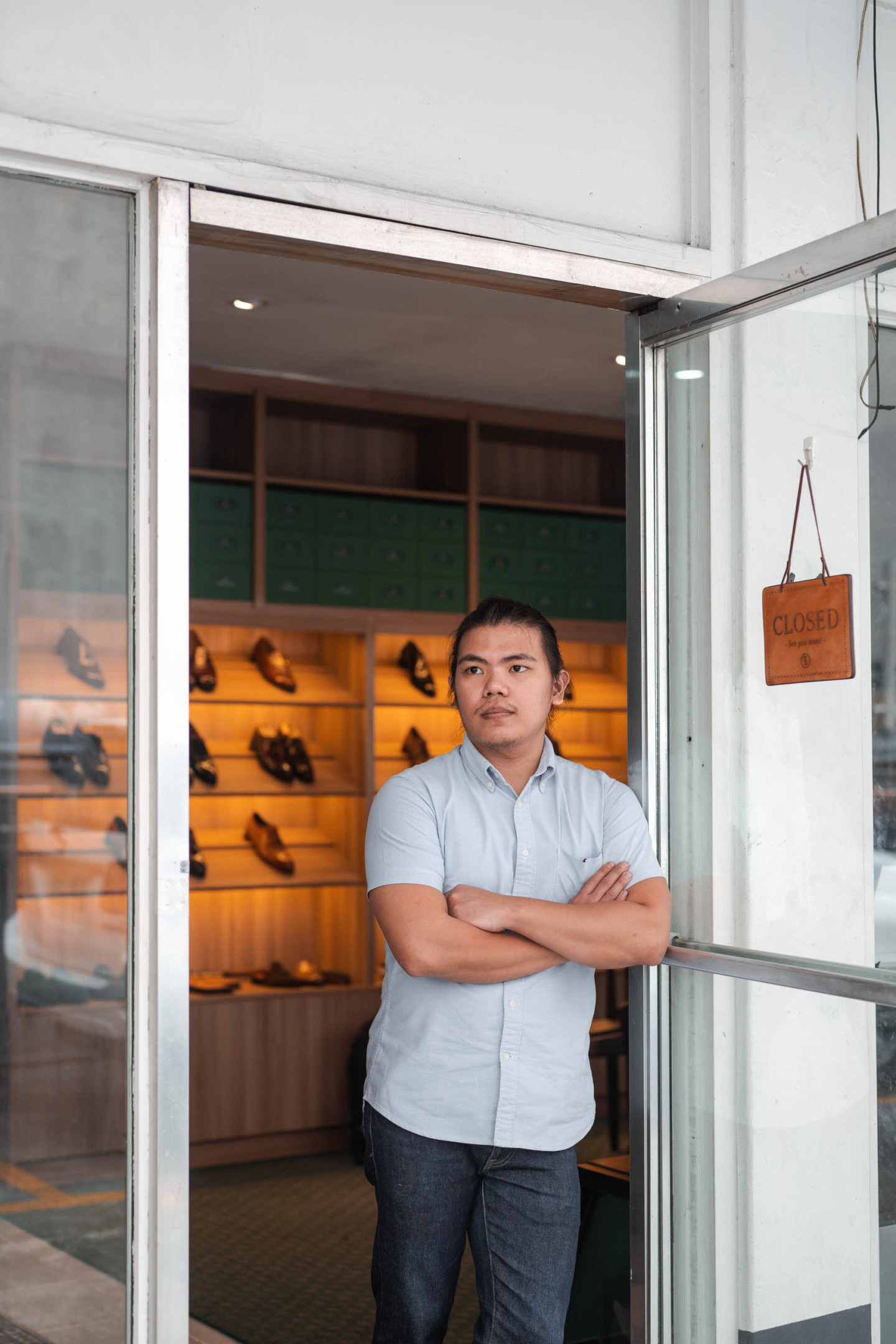
“Beyond being the best in the country, I want to preserve the excellence of our craft. Right now, we share our passion for shoemaking, one client at a time,” JR shared his commitment to the mission. Slowly but surely, Sapatero is convincing more and more Filipinos that shoes are not just a commodity. More than just “footwear” shoes bring you places and accompany you through life’s seasons. For JR, this is only the beginning for Sapatero, “I want to build a community that sees shoes as luxury; a community with deep appreciation for the craft. I dream of the day when Sapatero can be a venue for budding shoemakers to learn from the seasoned masters, eventually creating a space where we can train shoemakers and pass on our passion for shoemaking from one generation to another.”
And this dream is what he and Sapatero continue to move towards—one step and one well-crafted pair of shoes at a time.

